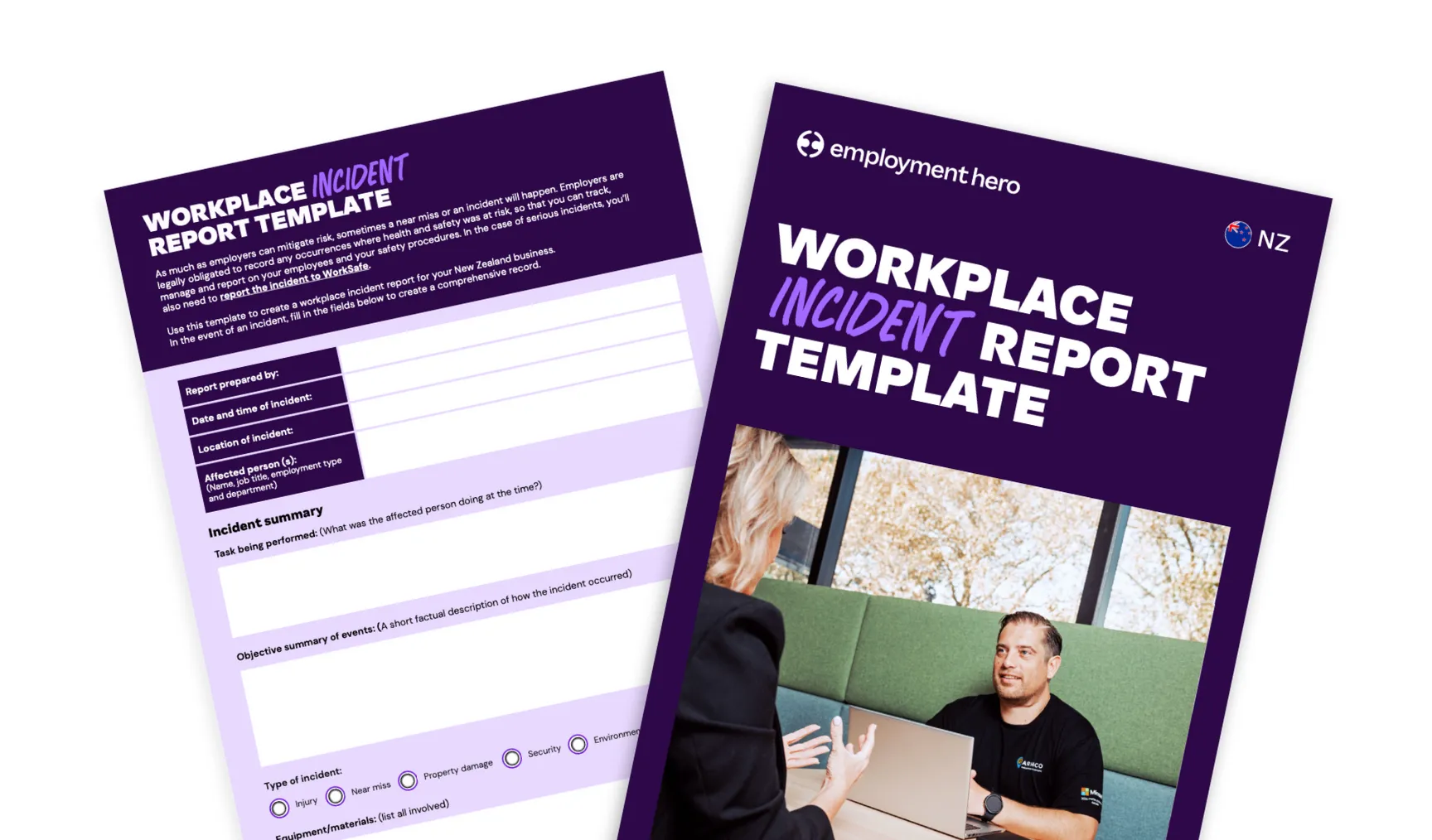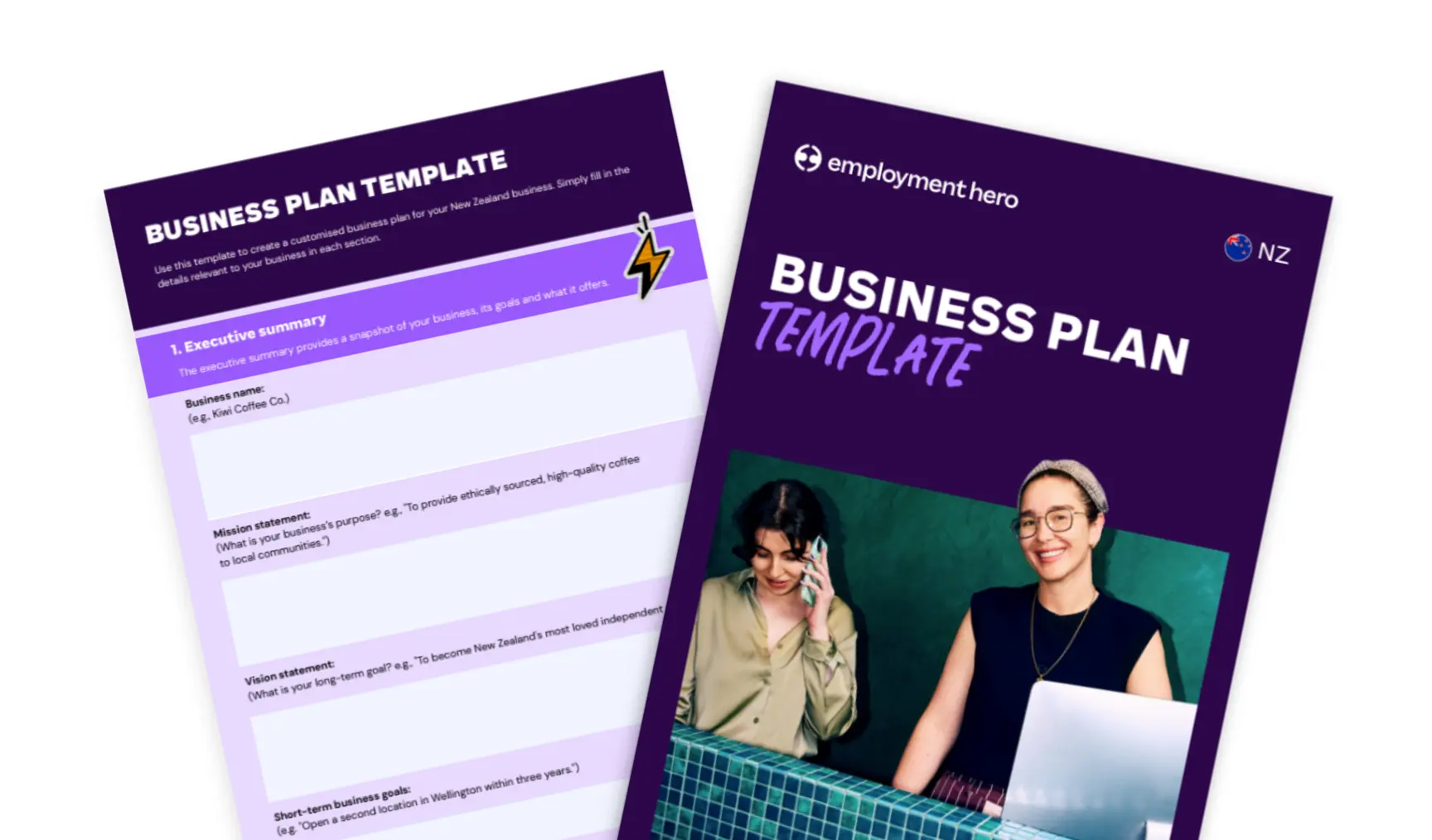Understanding the disciplinary process in New Zealand
Published
Understanding the disciplinary process in New Zealand
1 min read
There are so many elements to HR – from building a strong culture to promoting career development. Some elements, however, are less fun. No one likes to deal with misconduct but the reality of a workplace is that sometimes, it involves the dreaded disciplinary process.
That’s why we’ve created a guide to help you navigate workplace misconduct and the disciplinary process. Our guide covers:
- The types of misconduct (general and serious misconduct)
- What happens when the misconduct happens outside of work
- The formal steps of the disciplinary process
- How to conduct a formal meeting
- Making a final decision
- Guidance on employee dismissal
- How to prevent future misconduct
Download our guide today for advice on how to get through a challenging process and ensure that your workplace remains a positive and safe environment for all.
What is a disciplinary process?
A disciplinary process is a formal procedure used by organisations to address misconduct and decide on the appropriate disciplinary action. If done correctly, it should halt any misconduct in its tracks while also reducing any risk to the business, employer and other employees.
What qualifies as misconduct?
Misconduct is when an employee’s behaviour violates rules or workplace protocols, and can range from minor infractions to significant illegal activity. It’s usually put into one of two categories – general or serious misconduct.
General misconduct
General misconduct tends to involve behaviours that aren’t intended to harm others or the company, but do breach company policy or workplace standards. Examples include:
- Unauthorised absences
- Lateness
- Inappropriate language
- Internet misuse
Serious misconduct
Serious misconduct (also known as ‘gross misconduct’) involves behaviours that are egregious enough that they could warrant significant consequences, or even dismissal. Examples include:
- Theft or fraud
- Sexual harassment
- Assault
- Intoxication at work
 How can you handle employee misconduct?
How can you handle employee misconduct?
The disciplinary process will vary depending on the seriousness of the misconduct. For general misconduct, you might only need to address the situation informally. However, if the misconduct happens again after that, or it’s serious misconduct, then the formal disciplinary process will be required.
What is the informal process in New Zealand?
The informal process can vary depending on how the company wants to handle it. Generally, it involves communication between the employee and the line manager about the issue, and then a verbal or written warning if warranted.
The Ministry of Business, Innovation and Employment has provided the following step-by-step guide for employers when it comes to informal management of an issue:
Step 1
Identify the problem.
Step 2
Assess and analyse the problem to determine how serious the problem is.
Step 3
Meet with the employee informally to discuss the issue in a comfortable and non-threatening environment, where an open discussion takes place between the employer and employee.
Step 4
After a two-way conversation, settle on a resolution (eg. verbal warning) and outline the potential consequences if the misconduct occurs again. We’d recommend that you document the actions of the discussion and the outcome.
 What is the formal disciplinary process in NZ?
What is the formal disciplinary process in NZ?
Step 1
Before initiating a formal process, it is crucial to check if there is a full disciplinary procedure in the employee’s employment agreement and adhere to it. In cases where a disciplinary process may be necessary, conducting initial investigations is recommended, which may involve reviewing relevant documents or speaking briefly with witnesses.
During these investigations or when talking to other employees, it is essential to handle the situation delicately and confidentially to avoid breaching the alleged employee’s privacy. The employer should only address the issue with the employee once they feel fairly certain that a problem exists and needs to be resolved.
Step 2
Send the employee a letter outlining the known details of the misconduct and give them a date for a disciplinary meeting (with sufficient notice). Inform the employee about the potential consequences they may face, such as disciplinary action or dismissal. Encourage the employee’s participation in the process and let them know they can seek representation or bring a support person to the meeting if desired.
Step 3
After providing notice, conduct a formal disciplinary hearing led by a designated employer representative. Present all allegations, concerns, and investigation results to the employee. Both parties should openly discuss the raised issues, with the employee or their representative having the chance to respond.
After the employee addresses the initial findings, the meeting should end, allowing the decision-maker ample time to consider all information before reaching a final decision. Avoid making decisions during or at the conclusion of the disciplinary meeting.
It’s really important that all conversations and discussions during the process are recorded in writing, including records of any meetings held, for a transparent decision-making process.
Step 5
Share a ‘preliminary decision’ with the employee, including details of proposed disciplinary action. Allow the employee to respond before making a final decision. This can be done through another meeting or by providing a letter with the preliminary decision and reasons, giving the employee sufficient time for written feedback. Consider the employee’s feedback with an open mind and incorporate it into the final decision, documenting how their comments were taken into account.
Step 6
Conduct a meeting with the employee to deliver the final decision, providing a clear explanation of the reasoning behind it. During the meeting, ensure the employee has the option to have their representative or support person present. After the meeting, confirm the final decision in writing, providing a written record of the outcome.
How long does the disciplinary process typically take?
The time it takes to complete the disciplinary process varies depending on the severity of the misconduct. However, to ensure a fair process, it’s critical that the process both allows time for the employee to review the allegations and respond, but doesn’t drag on to the point where it’s actively impeding the employee’s ability to work.
Do you need to give notice to employees before a disciplinary meeting?
Yes – it is critical that the employee is given notice before a disciplinary meeting, as it’s part of the fair and reasonable process required by Employment New Zealand. Employees should have sufficient time to get advice or prepare a response to the initial allegations. They should also be informed that they can bring a representative or support person to the meeting.
What questions should you ask employees at a disciplinary meeting?
Disciplinary meetings must be a two-way discussion. The employer should lay out the information they have about the misconduct, while the employee should be given the right to respond. It can also help to ask additional questions to ensure that it’s a fair process.
Questions to ask an employee at a disciplinary hearing may include:
- Can you explain your understanding of the purpose of this meeting?
- Are you aware of the allegation made against you?
- Do you have knowledge of the potential consequences associated with the alleged misconduct or misbehaviour?
- Can you outline your understanding of the steps involved in the disciplinary procedure?
- Do you believe you have been given sufficient time to adequately prepare for this hearing?
 What are the possible outcomes of taking disciplinary action?
What are the possible outcomes of taking disciplinary action?
There are plenty of potential outcomes of disciplinary action that an employer might choose, including:
- No penalty
- A verbal warning
- A first written warning
- A final written warning
- A first and final written warning
- Termination of employment
If you’re considering taking the significant step of dismissing an employee, it is absolutely critical that you obtain independent legal advice first. Making this step without ensuring compliance can leave you open to a personal grievance claim of unjustifiable dismissal being filed by the ex-employee, and you may find yourself penalised by the Employment Relations Authority.
It’s important to create a fair process for your employees
Nobody likes to go through the processes we’ve outlined. They’re tough on everyone and they can significantly affect the morale and culture of a workplace. However, if you follow a fair process that applies to all employees, you can ensure that misconduct is dealt with effectively.
This is also where workplace policies come in useful – have you got a workplace policy that outlines your disciplinary process? It’s a really important way to ensure employees know what to expect and that leaders and managers have a guidebook to follow.
Good luck! We hope you don’t need this guide anytime soon but make sure to familiarise yourself with what you need to know. Download the guide today by filling in the form on the right.
Disclaimer: The information in this guide is current as at 25 July 2023, and has been prepared by Employment Hero Pty Ltd (ABN 11 160 047 709) and its related bodies corporate (Employment Hero). The views expressed in this guide are general information only, are provided in good faith to assist employers and their employees, and should not be relied on as professional advice. The information is based on data supplied by third parties. While such data is believed to be accurate, it has not been independently verified and no warranties are given that it is complete, accurate, up to date or fit for the purpose for which it is required. Employment Hero does not accept responsibility for any inaccuracy in such data and is not liable for any loss or damages arising either directly or indirectly as a result of reliance on, use of or inability to use any information provided in this guide. You should undertake your own research and seek professional advice before making any decisions or relying on the information in this guide.
Register for the guide.
Related Resources
-
 Read more: Incident report template NZ: free download for businesses
Read more: Incident report template NZ: free download for businessesIncident report template NZ: free download for businesses
Download our free NZ incident report template. Record and report workplace incidents correctly under HSWA and ACC requirements.
-
 Read more: Serious misconduct in New Zealand: What employers must know
Read more: Serious misconduct in New Zealand: What employers must knowSerious misconduct in New Zealand: What employers must know
Learn what serious misconduct means under NZ law, common examples, and how to manage the process legally and fairly. Protect…
-
 Read more: Free business plan template for New Zealand business owners
Read more: Free business plan template for New Zealand business ownersFree business plan template for New Zealand business owners
Published Published Starting and running a business is a journey that needs direction. That’s why a well-crafted business plan is…





















